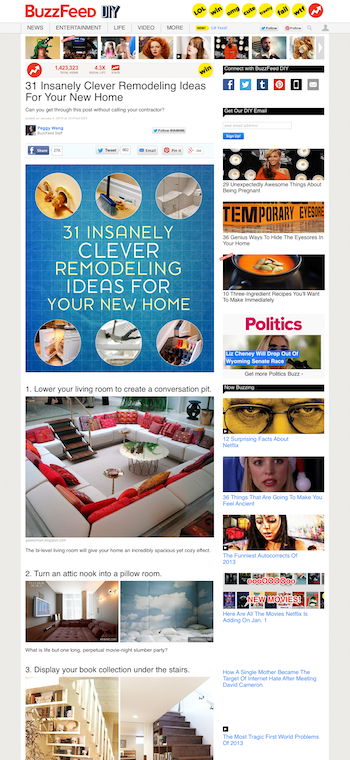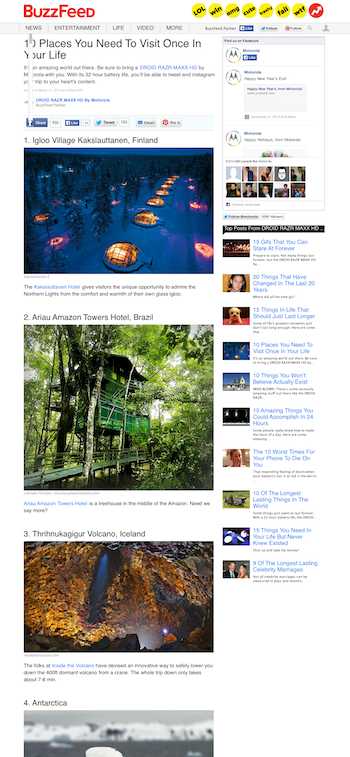I’ve always thought that I know pretty well how to navigate media. That I can immediately tell if a piece of content is an advertisement. After all, understanding the difference between ads and journalism is a crucial part of media literacy, right?
Then I read Wired’s story “How BuzzFeed mastered social sharing to become a media giant for a new era“.
BuzzFeed is a quickly growing media company that started in 2006 with a focus on viral content (pictures of cute cats, LOL). Since then they’ve gathered a funding of $46m, grown to a media giant and plan to take on serious journalism or so-called hard news.
We will stay away from anything that requires adopting a legacy business model… We are building the defining news and entertainment company for the social, mobile age.
BuzzFeed’s business model is advertising. Here’s the catch: on BuzzFeed I no longer know if I’m looking at an ad or not. That’s by design. The Guardian reports:
That advertorial – advertising content that looks like editorial – is actually the source of BuzzFeed’s financial progress, according to Peretti.
One of the following is a paid-for advertisment that had a very good 6,1% click-through rate:
- 31 Insanely Clever Remodeling Ideas For Your New Home. Can you get through this post without calling your contractor?
- 10 Places You Need To Visit Once In Your Life. It’s an amazing world out there.
At a glance, I’d say they look pretty similar.


Conclusion: native advertisement or advertorials are going to replace banner ads.